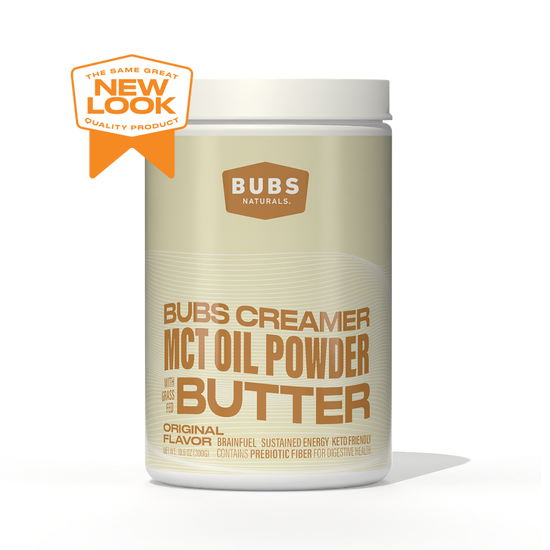Table of Contents
- Introduction
- The Origins of Coffee Creamer
- Ingredients of Coffee Creamer
- The Manufacturing Process
- Homemade Coffee Creamer: A Simple Alternative
- Nutritional Considerations
- Choosing the Right Coffee Creamer
- Conclusion
- FAQ
Introduction
Have you ever wondered what's swirling around in your morning coffee when you add that creamy, sweet concoction? Coffee creamer, a staple in many households, often has a mysterious reputation. While it transforms a simple cup of coffee into a delightful treat, the question remains: how is coffee creamer made?
The story of coffee creamer begins in the mid-20th century when it emerged as a popular alternative to traditional dairy products like milk and cream. Its rise in popularity has paralleled the growing demand for non-dairy options, making it a go-to choice for those with dietary restrictions or preferences. However, the ingredients and manufacturing processes behind coffee creamer are often shrouded in confusion. This blog post aims to demystify the subject, exploring everything from the basic ingredient lists to the processes involved in creating this widely-used product.
By the end of this post, you will have a comprehensive understanding of how coffee creamer is made, what goes into it, and how to choose the right type for your coffee. We’ll also delve into the nutritional considerations, the differences between homemade and commercial creamers, and even some exciting recipes to try at home. Together, we'll explore the world of coffee creamer and uncover the secrets that make it a beloved addition to many people's daily rituals.
The Origins of Coffee Creamer
The idea of adding cream to coffee dates back centuries, but it was not until the 1950s that the first commercially available coffee creamer hit the market. This innovation was driven by the desire for a convenient, shelf-stable alternative to dairy cream. The first product, known as "Coffee-Mate," was introduced by Carnation in 1961 and quickly gained traction among coffee drinkers, particularly those seeking non-dairy options.
Over the years, coffee creamer has evolved significantly. Today, it’s available in a multitude of flavors, forms, and formulations, catering to diverse dietary needs and preferences. This growth reflects changing consumer demands, especially the increasing popularity of plant-based diets and lactose-free products.
Ingredients of Coffee Creamer
Understanding how coffee creamer is made starts with knowing its ingredients. Commercial coffee creamers typically consist of a blend of the following components:
1. Water
Water is the primary ingredient in most coffee creamers. It acts as a solvent, helping to dissolve other ingredients and create the desired consistency.
2. Vegetable Oils
Most creamers include vegetable oils, such as palm, corn, or canola oil, which provide the creamy texture that people expect from a traditional cream. These oils help to create a rich mouthfeel and prevent the product from separating.
3. Sweeteners
Commercial coffee creamers often contain added sugars or sweeteners to enhance flavor. These can include high fructose corn syrup, cane sugar, or artificial sweeteners. The amount and type of sweetener can vary widely among brands.
4. Emulsifiers
Emulsifiers like sodium stearoyl lactylate or mono- and diglycerides are often included to help blend the oil and water components, ensuring a smooth and uniform texture.
5. Flavorings
To create the wide array of flavors available, companies add natural or artificial flavorings. Popular options include vanilla, hazelnut, and seasonal favorites like pumpkin spice.
6. Stabilizers and Preservatives
Many commercial creamers also contain stabilizers and preservatives, such as carrageenan or potassium sorbate, to extend shelf life and maintain consistency. These ingredients help to prevent separation and spoilage.
7. Milk Derivatives
While many creamers are marketed as non-dairy, some may include milk derivatives like sodium caseinate, which is a protein derived from milk. This allows the product to maintain a creamy texture without being fully dairy-based.
The Manufacturing Process
The production of coffee creamer involves several key steps, which may vary slightly depending on the manufacturer and the specific formulation. However, the general process is as follows:
1. Ingredient Preparation
First, the ingredients are gathered and prepared. This includes measuring out the appropriate amounts of water, oils, sweeteners, and other components.
2. Blending
The water and vegetable oils are blended together in a large mixing tank. This step is crucial, as achieving the right emulsification is key to a smooth product. Emulsifiers are often added during this stage to help stabilize the mixture.
3. Heating
The blended mixture is then heated to a specific temperature. This process helps dissolve sugars and emulsifiers and ensures a uniform consistency. Heating also helps to reduce microbial contamination.
4. Flavor Addition
Once the mixture is adequately blended and heated, flavorings and additional ingredients like stabilizers and preservatives are added. The mixture is thoroughly blended again to ensure even distribution.
5. Homogenization
To achieve a smoother texture, the mixture is passed through a homogenizer. This machine breaks down fat globules, ensuring they remain evenly distributed throughout the liquid.
6. Packaging
After homogenization, the coffee creamer is cooled and packaged in airtight containers. This step is essential for preserving freshness and preventing spoilage. Depending on the product, packaging can range from bottles to single-serving creamers.
7. Quality Control
Finally, the packaged creamers undergo rigorous quality control testing to ensure they meet safety and quality standards. This may include checking for consistency, flavor, and shelf life.
Homemade Coffee Creamer: A Simple Alternative
While commercial coffee creamers offer convenience, many people are turning to homemade versions for a more natural and customizable option. Making your own coffee creamer at home allows you to control the ingredients and avoid preservatives and artificial flavors. Here’s a simple recipe to get you started:
Basic Homemade Coffee Creamer Recipe
Ingredients:
- 1 cup of milk or non-dairy milk (almond, oat, soy, etc.)
- 1 cup of heavy cream or coconut milk for a dairy-free option
- 2-3 tablespoons of sweetener (sugar, maple syrup, or honey)
- 1-2 teaspoons of vanilla extract (or flavor of your choice)
Instructions:
- In a mixing bowl, combine the milk and cream.
- Stir in the sweetener and vanilla extract until well blended.
- Pour the mixture into an airtight container and refrigerate.
- Shake well before each use.
This homemade creamer can be stored in the refrigerator for about two weeks. You can also experiment with different flavorings, such as cocoa powder, cinnamon, or even pumpkin puree for seasonal variations.
Nutritional Considerations
When considering coffee creamer options, it's essential to evaluate their nutritional content. Commercial creamers, particularly flavored varieties, can be high in added sugars and calories. For example, a single tablespoon of flavored coffee creamer can contain up to 5 grams of sugar, which is more than a teaspoon. This can add up quickly, especially for those who take multiple cups of coffee daily.
On the other hand, homemade coffee creamers allow for more control over the ingredients, making it easier to create a healthier alternative. By using natural sweeteners and controlling the fat content, you can tailor your creamer to fit your dietary needs.
Choosing the Right Coffee Creamer
With so many options available, choosing the right coffee creamer can be overwhelming. Here are a few tips to help you make an informed choice:
-
Read Labels: Always check the ingredient list. Look for creamers with fewer additives and preservatives, and be cautious of those containing high fructose corn syrup or artificial flavors.
-
Consider Dietary Needs: If you're lactose intolerant or following a vegan diet, opt for plant-based creamers made from almond, coconut, or oat milk. These options often provide a creamy texture without dairy.
-
Watch Sugar Content: Be mindful of the sugar content in commercial creamers. If you're trying to reduce sugar intake, look for sugar-free alternatives or make your own sweetened version at home.
-
Flavor Preferences: Explore different flavors and find what works best for your palate. From classic vanilla to seasonal spices, there's a flavor for everyone.
-
Experiment with Homemade Options: Don't hesitate to try making your own coffee creamer. It's simple, customizable, and a fun way to enhance your coffee experience.
Conclusion
In conclusion, coffee creamer is a versatile addition to many people's coffee routines, providing a creamy texture and a burst of flavor. Understanding how coffee creamer is made—from its origins and ingredients to the manufacturing process—can help you make informed choices about what you consume. Whether you choose commercial options or decide to make your own, knowing the ins and outs of coffee creamer can enhance your coffee experience.
As we embrace our coffee rituals, let’s remember the importance of quality and health in our choices. By opting for natural ingredients and being mindful of our dietary needs, we can enjoy our coffee while supporting our overall wellness.
FAQ
1. What is the main ingredient in coffee creamer? Most coffee creamers are primarily made from water and vegetable oils, along with sweeteners and flavorings.
2. Can coffee creamer be dairy-free? Yes, many coffee creamers are dairy-free and made from plant-based ingredients like almond, soy, or coconut milk.
3. How long does coffee creamer last? Commercial coffee creamers can typically last several months if unopened. Once opened, they should be refrigerated and used within a few weeks. Homemade creamers usually last about two weeks in the fridge.
4. Is coffee creamer bad for you? The health impact of coffee creamer depends on its ingredients. Many commercial creamers contain added sugars and artificial ingredients, which may not be ideal for everyone. Homemade options offer a healthier alternative.
5. How can I make my own coffee creamer? You can make your own coffee creamer by combining milk or non-dairy milk, heavy cream or coconut milk, sweetener, and flavorings in a container. Adjust the ingredients to your taste preferences.
By understanding the ingredients and processes behind coffee creamer, we empower ourselves to make healthier choices while still enjoying our favorite morning ritual. Whether you opt for store-bought or homemade, the choice is yours, and it can be a delicious one!
Written by:

Butter MCT Oil Creamer
BUBS Butter MCT Oil Creamer (formerly Halo Creamer): Scientifically-Backed Brain and Body Fuel
BUBS Butter MCT Oil Creamer is your go-to for clean, fast-acting energy and focus, no crash included. It blends creamy grass-fed butter with fast-acting MCT oil powder (C8 and C10) to kickstart your day and keep you sharp. The MCTs go straight to work, giving your brain a quick boost while the grass-fed butter supports digestion and gut health.
Together, they help curb cravings, keep you feeling full longer, and support steady energy throughout the day—perfect for fueling your mornings or powering through the afternoon slump.
Starts at $36.00
Shop

